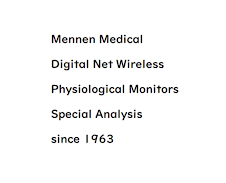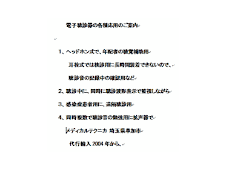Thursday, December 20, 2012
小児先天性心疾患は、その発見が一般的に遅れ場合が多いと指摘しています
Congenital Heart Disease Often Detected Late Nancy A. Melville Nov 06, 2012 SAN FRANCISCO, California — Infants born in level 1 or 2 nurseries have higher levels of late detection of critical congenital heart disease (CCHD), and more cases at such centers are missed, according to research presented here at the American Public Health Association 140th Annual Meeting.
Researchers evaluated infants born with 12 types of CCHD from 1998 to 2007 using the Florida Birth Defects Registry and hospital discharge records.
The infants were identified as having a late detection of CCHD if the records showed no International Classification of Diseases, Ninth Revision, Clinical Modification (ICD-9-CM) code indicating congenital heart disease on the birth hospitalization record.
There were no significant differences on measures of maternal race, ethnicity, or maternal age or education; however, there was a big difference in the level of nursery care at the birth hospital.
The unadjusted prevalence ratio of being undetected at a level 1 nursery to being undetected at a level 3 nursery was 4.9; the ratio of undetection at a level 2 to a level 3 nursery was 3.3.
Which Congenital Defects Are Most Likely to Be Detected Late?
The rate of late detection was 36.8% for coarctation of the aorta and 24.0% for tetralogy of Fallot.
"The association between a level 1 or 2 birth hospitalization nursery and delayed detection suggests that universal newborn screening for CCHD could be particularly beneficial" in these settings, she added.
CCHD Added to Screening Panel in 2011
http://www.medscape.com/viewarticle/773929_print
1/2 ページ
In the final sample of 3603 infants, 2778 were diagnosed with CCHD in a timely manner, but 825 did not have a CCHD diagnosis on their hospital discharge record (an undetected prevalence rate of nearly 23%).
Coarctation of the aorta, tetralogy of Fallot, aortic arch atresia/hypoplasia, total anomalous pulmonary venous connection, and truncus arteriosus were significantly more likely to have been detected late than hypoplastic left heart syndrome.
"To our knowledge, this is the first study to investigate...late detection in infants and, as we expected, the type of CCHD was associated with timely detection," said coauthor April Dawson, MPH, from the National Center on Birth Defects and Developmental Disabilities at the Centers for Disease Control and Prevention in Atlanta, Georgia.
In response to concerns about timely CCHD detection, Kathleen Sebelius, secretary of the US Department of Health and Human Services, approved the addition of CCHD to the Recommended Uniform Screening Panel in October 2011.
The Secretary's Advisory Committee on Heritable Disorders in Newborns and Children identified 7 specific lesions as primary targets for screening with pulse oximetry: hypoplastic left heart syndrome, pulmonary atresia, tetralogy of Fallot, total anomalous pulmonary venous return, transposition of the great arteries, tricuspid atresia, and truncus arteriosus.
After the approval, New Jersey became the first state to mandate CCHD screening for all newborns; since then, 9 states have enacted similar legislation and 9 others have introduced legislation for mandated screening. In other states, many hospitals have implemented voluntary screening.
2012/11/11
Moving in the Right Direction
According to Marianne M. Hillemeier, PhD, MPH, from the Department of Health Policy and Administration at Pennsylvania State University in University Park, the late detection rate found in this study is troubling, but the new recommendations suggest movement in the right direction.
"I think it is very clinically significant that 23% of congenital heart conditions were not diagnosed until after the newborn hospitalization," she said. "I expect that recommendations for early screening will improve this situation," she said.
The findings also highlight the need for improved awareness at level 1 and 2 nurseries, Dr. Hillemeier added.
Ms. Dawson and Dr. Hillemeier have disclosed no relevant financial relationships.
American Public Health Association (APHA) 140th Annual Meeting. Abstract 262258. Presented October 30, 2012.
Medscape Medical News © 2012 WebMD, LLC
Send comments and news tips to news@medscape.net.
Cite this article: Congenital Heart Disease Often Detected Late. Medscape. Nov 06, 2012.
Subscribe to:
Post Comments (Atom)

















No comments:
Post a Comment